Water primrose identification and control
Information about the noxious weed water primrose. Water primrose is also known by its scientific name, Ludwigia hexapetala.
About this weed
Water primrose is a regulated Class B noxious weed in King County. This means control is required in King County under the state noxious weed law.
It is also on the Washington quarantine list, and it is illegal to buy, sell, or offer it for sale in the state.
Water primrose is also known as false loosestrife, creeping waterprimrose, Uruguay waterprimrose, or Ludwigia hexapetala and it is in the evening primrose family.
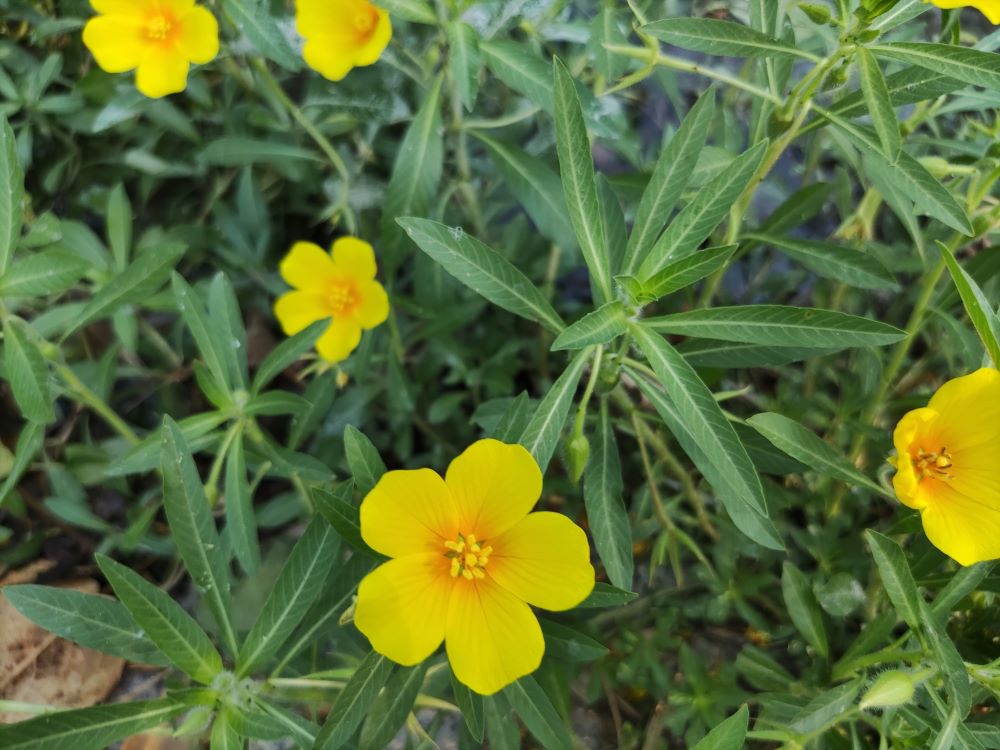
Why it's a noxious weed
- Water primrose is an invasive aquatic species that can create dense floating mats that clog waterways and reduce habitat quality.
- Water primrose can dominate shoreline vegetation if introduced to lakes, rivers, ponds, or streams.
- It is very difficult to control once established.
This aquatic Class B noxious weed has been observed occasionally in King County, Washington. The largest infestations of water primrose in the state are in southwest Washington where there are extensive mats of this weed along channels in the lower Columbia River area.
Plant description
-
Water primrose is a perennial (plants that have a 2+ year life cycle) aquatic plant that is often found growing and rooted in areas of shallow water.
-
It is emergent, meaning it grows with roots below the water surface, and other parts grow above the water upright to 3 feet, then outwards in a sprawl.
-
Willow-shaped (long and narrow) leaves up to about 10 cm grow alternately on the stem (in a staggered pattern, without a pair) and/or in a whorl around the stem. Veins are obvious, light green with one main central vein per leaf.
-
Bright yellow flowers have five petals. Bracts (modified leaves that grow directly below petals) are green and pointed at the tips.
-
Buds are cone/tear drop shaped, very hairy, and point downwards.
-
Stems grow flat on the water surface or mud, growing upright during flowering.
-
Seeds form in capsules that are up to 3 cm long.
-
Plants spread through seed and plant fragmentation (Easily lost parts that have high potential to grow into a complete plant).
Water primrose is native to Central and South America.
In Washington, a field infestation is known from the Longview/Kelso Diking District in Cowlitz County, growing in the ditches. It has been in the area for about 25 years. There is an herbarium specimen dated 1956, from the "Longview Toll Bridge". It was placed on the Washington state's noxious weed Monitor list in 1997 for tracking purposes.
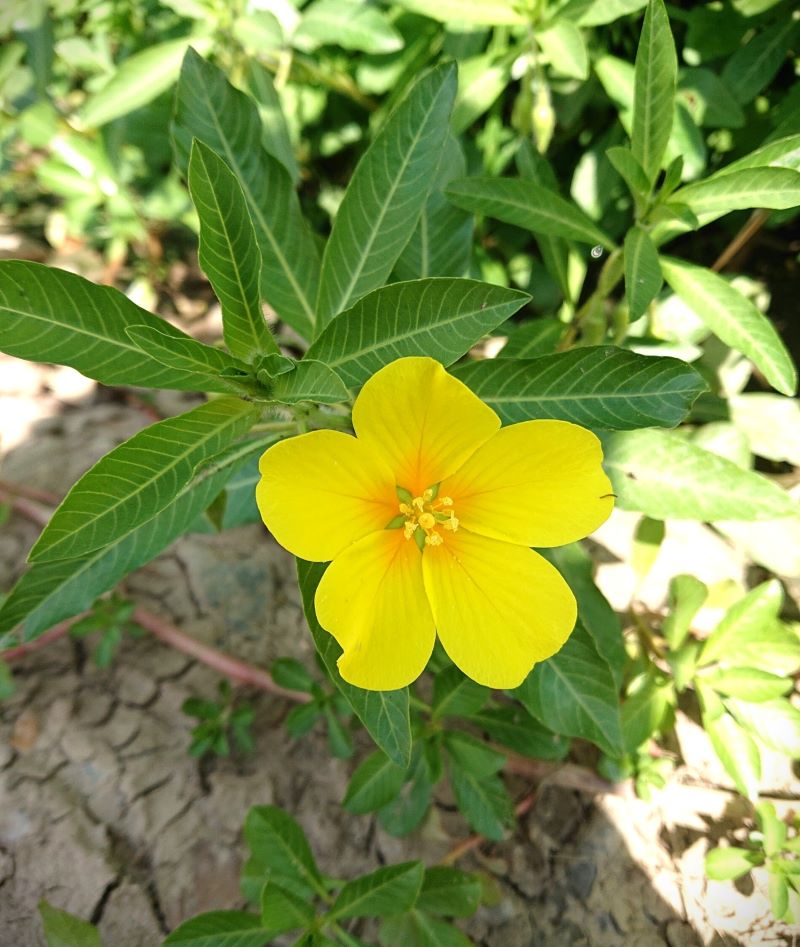
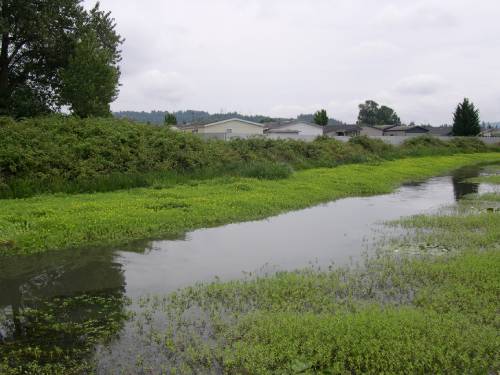
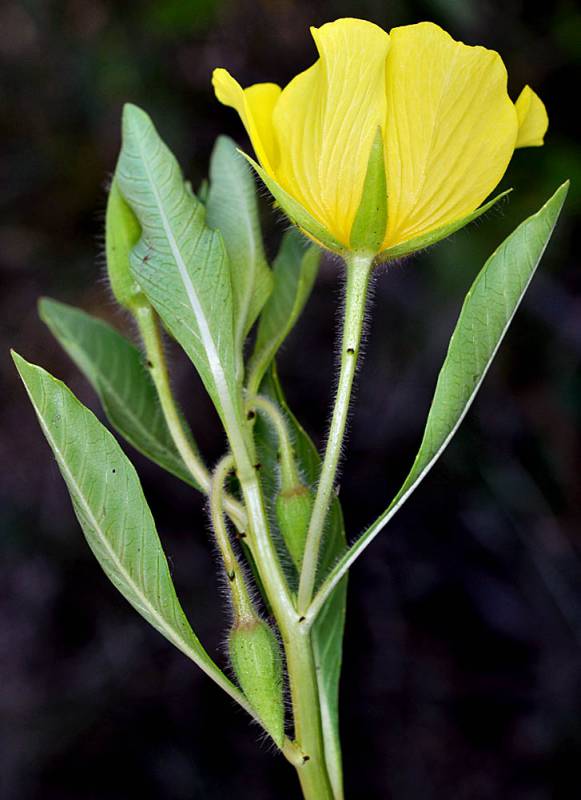

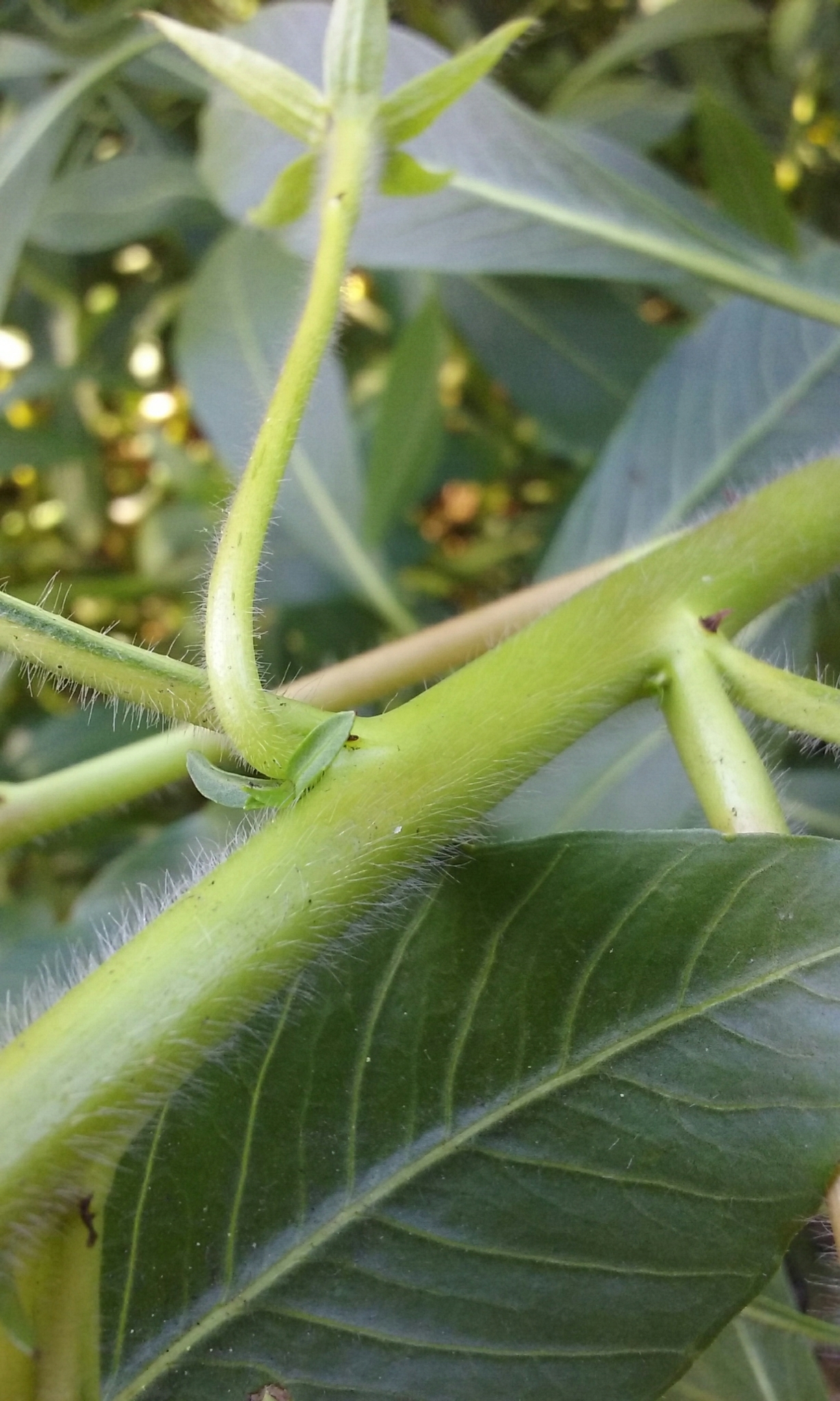
Be aware of look-alike plants
Water primrose may be confused with:
Class A noxious weed: Floating primrose-willow (Ludwigia peploidies), is closely related and looks similar to water primrose with yellow flowers and alternate growing leaves. But the look-alike has wider, more rounded leaves (pointy egg shaped) that are usually shinier/waxier than that of Water primrose. Water primrose also has more upright flowering stems. Both of these plants are high priority noxious weeds.
Native plant: water purslane (Ludwigia palustris), is closely related but easier to distinguish than the above species. The native plant has flowers, but they are not obvious. They are sessile (no flower sticks) and lack petals. Their small unnoticeable green flowers sprout from between the stem and leaves. Leaves, unlike those of L. peploides or L. hexapetala, grow opposite (nose-to-nose) along the stem.
When in doubt, take photos and share them with us or report them on iNaturalist.
What to do if you find it
Property owners are required to control water primrose on lands that they manage. Please notify us if you see it growing in King County. Our program staff can provide the property owner or appropriate public agency with site-specific advice on how best to remove it. We map all known locations of regulated noxious weeds such as water primrose in order to help us and others locate new infestations in time to control them.
This plant is often distributed through movement of watercrafts and water related equipment. Make sure you inspect your watercraft at the boat launch before entry and after exit to avoid spreading any invasive or nuisance aquatic plants or animals. See King County’s boating information web page for more information.
Control methods
We recommend using a combination of methods to control noxious weeds. In areas with few weeds, it is important to act quickly before they become harder to control. Make a long-term plan as it often takes several years to get rid of most weeds. Start in the least infested areas first and then move into more heavily infested areas. Floating primrose-willow plants are very difficult to control. Incomplete control methods such as cutting can lead to further spread of viable plant fragments. These plant fragments can re-grow and increase the infestation. The entire plants must be removed for control to be effective.
Prevention
Water may be sold as an aquatic plant so be sure to check the scientific name of all plants before purchasing them, especially through the internet where companies may not be aware of Washington state laws. If you do spot this plant growing in a new place, be sure to act quickly to remove it entirely to keep it from spreading.
Manual control
Aquatic plant control that does not involve herbicide often requires a (free) permit. The rules and regulations for this type of removal will depend on your circumstance, please visit the WA Dept Fish and Wildlife for access to their Aquatic Plants & Fish Pamphlet and guidance on how to use it properly.
Digging can be effective with small infestations. Be sure to remove the entire plant and not leave any stem or root fragments behind. Dispose of plants in the garbage to avoid spreading the plant further.
Chemical control
Controlling this species is very challenging once it is established in a waterway. Herbicides that are registered for aquatic use in Washington have shown some effectiveness although multiple years of application are needed for complete control.
Stay safe when using herbicide:
- Always read the label before use.
- Wear a long-sleeved shirt, long pants, shoes, and eye protection.
- Follow state and local regulations.
Avoid spraying where there is a chance that herbicide will enter a waterway or wetland unless you are using a state-approved aquatic herbicide and have the required permits and licenses to do so. Use of pesticides in water is regulated in Washington state. See Washington Department of Ecology Aquatic Pesticide Permits for details.
For more information or a site-specific recommendation in King County, contact the noxious weed program. For information in other locations, contact your local weed board or extension office.
For information in other counties in Washington state, contact your local weed board or your local cooperative extension office.
Disposal instructions
To prevent further spreading or resprouting, plant material from regulated weeds such as floating primrose-willow, should be disposed of in the garbage.
Noxious Weed Disposal - Washington State Noxious Weed Control Board

 Translate
Translate